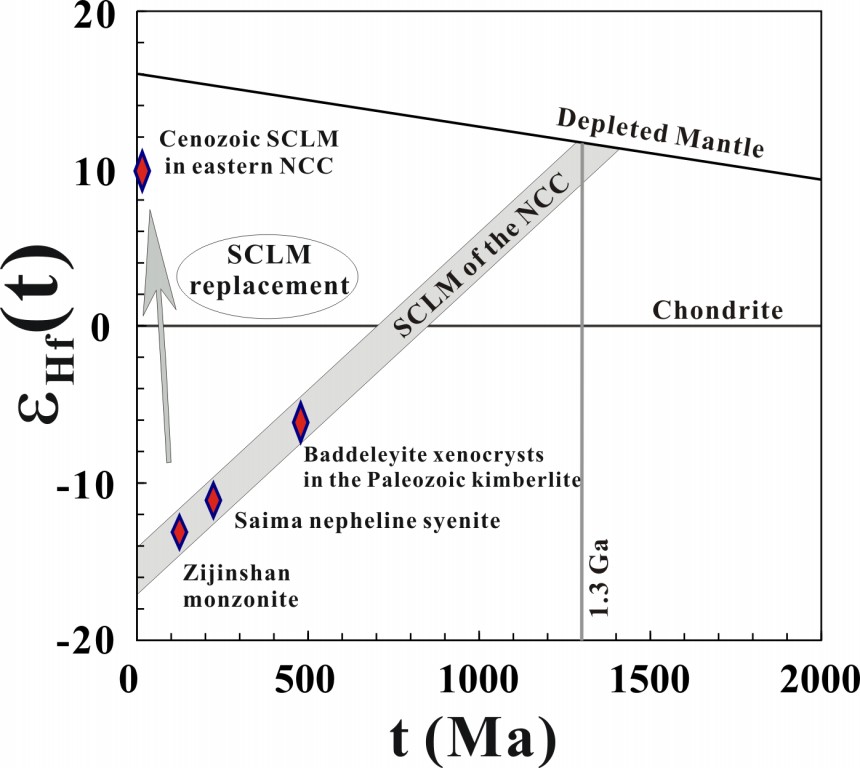Precisely dating Paleozoic kimberlites in the North China Craton and Hf isotopic constraints on the evolution of the subcontinental lithospheric mantleUpdate time:11 14, 2011
Vice Professor LI Qiuli and his team report emplacement ages of diamondiferous kimberlites in Mengyin and Fuxian of the North China Craton (NCC) using three different dating methods. Combined with data from Mesozoic–Cenozoic mantle-derived rocks and xenoliths, the Hf isotope evolution trend of the subcontinental lithospheric mantle (SCLM ) beneath NCC before craton destruction was tentatively constructed, which suggested that the Archean SLCM was enriched by metasomatism at ~1.3 Ga. Further Hf isotope investigations on additional SCLM-derived materials could be used to compare with the constructed Hf isotope evolution trend before craton destruction to determine when lithospheric thinning occurred.
Fig. 1. U–Th–Pb dating results for the Mengyin perovskite.(Image by LI)
Fig. 2. Hf isotope evolution diagram of the SCLM beneath the NCC before destruction Data source. (Image by LI) Li et al. Precisely dating Paleozoic kimberlites in the North China Craton and Hf isotopic constraints on the evolution of the subcontinental lithospheric mantle. Lithos, 2011, 126:127-134. (Download Here)
|
Contact
Related Articles
Reference
|
-
SIMSSecondary Ion Mass Spectrometer Laboratory
-
MC-ICPMSMultiple-collector ICPMS Laboratory
-
EM & TEMElectron Microprobe and Transmission Electron Microscope Laboratory
-
SISolid Isotope Laboratory
-
StIStable Isotope Laboratory
-
RMPARock-Mineral Preparation and Analysis
-
AAH40Ar/39Ar & (U-Th)/He Laboratory
-
EMLElectron Microscopy Laboratory
-
USCLUranium Series Chronology Laboratory
-
SASeismic Array Laboratory
-
SEELaboratory of Space Environment Exploration Laboratory
-
PGPaleomagnetism and Geochronology Laboratory
-
BioMNSFrance-China Bio-mineralization and Nano-structure Laboratory

 Print
Print Close
Close

